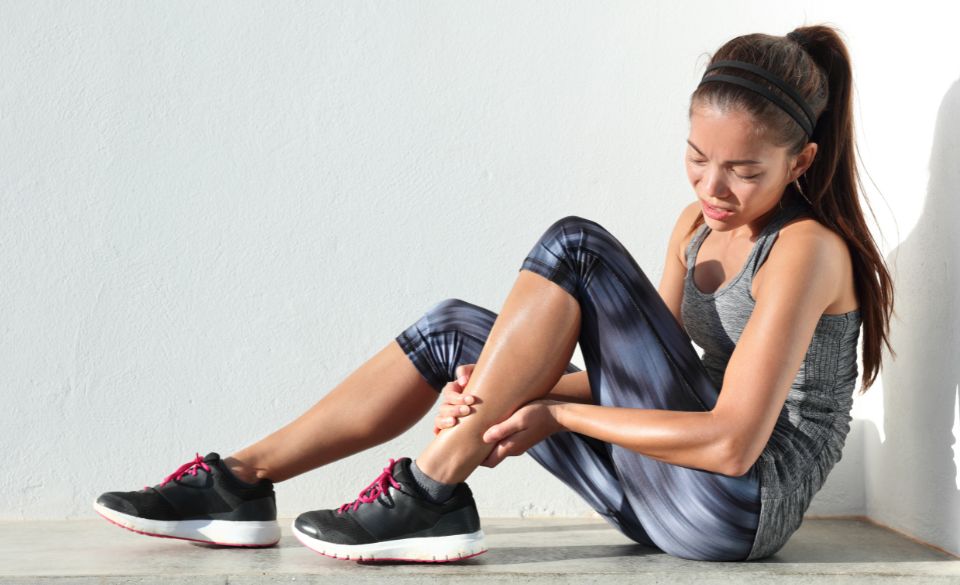
5 Tips for Dealing With Muscle Soreness After Running
Page Contents
Are you an avid runner who experiences muscle soreness after your workouts? If so, you’re not alone. Muscle soreness, also known as delayed onset muscle soreness (DOMS), is a common issue for runners. DOMS can occur 24 to 72 hours after a workout and can cause stiffness, tenderness, and pain in the muscles. But what causes this discomfort? While the exact cause of DOMS is not fully understood, researchers believe that a combination of factors, including microscopic muscle damage, lactic acid buildup, and eccentric muscle contractions, can all play a role. In this article, we’ll delve into the science behind muscle soreness after running and offer five tips to help you deal with it.
What Causes Muscle Soreness After Running
Muscle soreness after running, also known as delayed onset muscle soreness (DOMS), is a common occurrence among runners. DOMS typically occurs 24 to 72 hours after a workout and is characterized by stiffness, tenderness, and pain in the muscles. The exact cause of DOMS is not fully understood, but there are a few theories:
Microscopic muscle damage: Some researchers believe that DOMS is caused by microscopic damage to the muscle fibers. When you run, your muscles contract and lengthen repeatedly, which can cause small tears in the muscle fibers. This damage triggers an inflammatory response, which leads to soreness and stiffness.
Lactic acid buildup: Another theory is that DOMS is caused by the buildup of lactic acid in the muscles. Lactic acid is produced during intense exercise, and when it accumulates in the muscles, it can cause fatigue and soreness.
Eccentric muscle contractions: Eccentric muscle contractions occur when the muscle lengthens while under tension. This type of contraction is common during running, especially downhill running. Some researchers believe that eccentric contractions can cause more muscle damage and lead to greater soreness than other types of contractions.
A study published in the Journal of Athletic Training found that DOMS is likely caused by a combination of these factors. The researchers noted that eccentric contractions appear to be the primary cause of DOMS, but microscopic muscle damage and inflammation also play a role.
Another study published in the Journal of Sports Sciences found that muscle soreness after running is more likely to occur when runners increase their mileage or intensity too quickly. The researchers concluded that a gradual increase in training volume and intensity may help prevent DOMS.
In summary, muscle soreness after running is a common occurrence that can be caused by a combination of factors, including microscopic muscle damage, lactic acid buildup, and eccentric muscle contractions. Gradual increases in training volume and intensity may help prevent DOMS, but if you do experience soreness, rest, stretching, and other recovery techniques can help alleviate it.
5 Tips for Dealing With Muscle Soreness After Running
Muscle soreness is a common issue for runners, especially after a particularly intense workout or a long run. If you’re experiencing muscle soreness after running, here are five tips to help you deal with it:
1. Stretching: Stretching before and after running can help prevent muscle soreness. It can also help alleviate soreness after running by loosening tight muscles. Focus on stretching the major muscle groups used during running, such as the quads, hamstrings, calves, and hip flexors.
2. Rest and recovery: Give your muscles time to rest and recover after a run. Take a break from running or cross-training for a day or two to allow your muscles to repair themselves. This can also help prevent injury.
3. Foam rolling: Foam rolling is a form of self-massage that can help alleviate muscle soreness by breaking up knots and tension in the muscles. Roll over the sore areas of your muscles with a foam roller, applying gentle pressure.
4. Ice therapy: Applying ice to sore muscles can help reduce inflammation and alleviate pain. Apply an ice pack or a bag of frozen peas wrapped in a towel to the sore area for 15-20 minutes at a time, several times a day.
5. Proper nutrition and hydration: Proper nutrition and hydration are essential for muscle recovery. Make sure you’re consuming enough protein and carbohydrates to fuel your muscles and aid in recovery. Drink plenty of water to stay hydrated and help flush out toxins from your muscles.
By following these tips, you can help alleviate muscle soreness after running and prevent it from becoming a chronic issue. Remember to listen to your body and take the necessary steps to rest and recover when needed.


